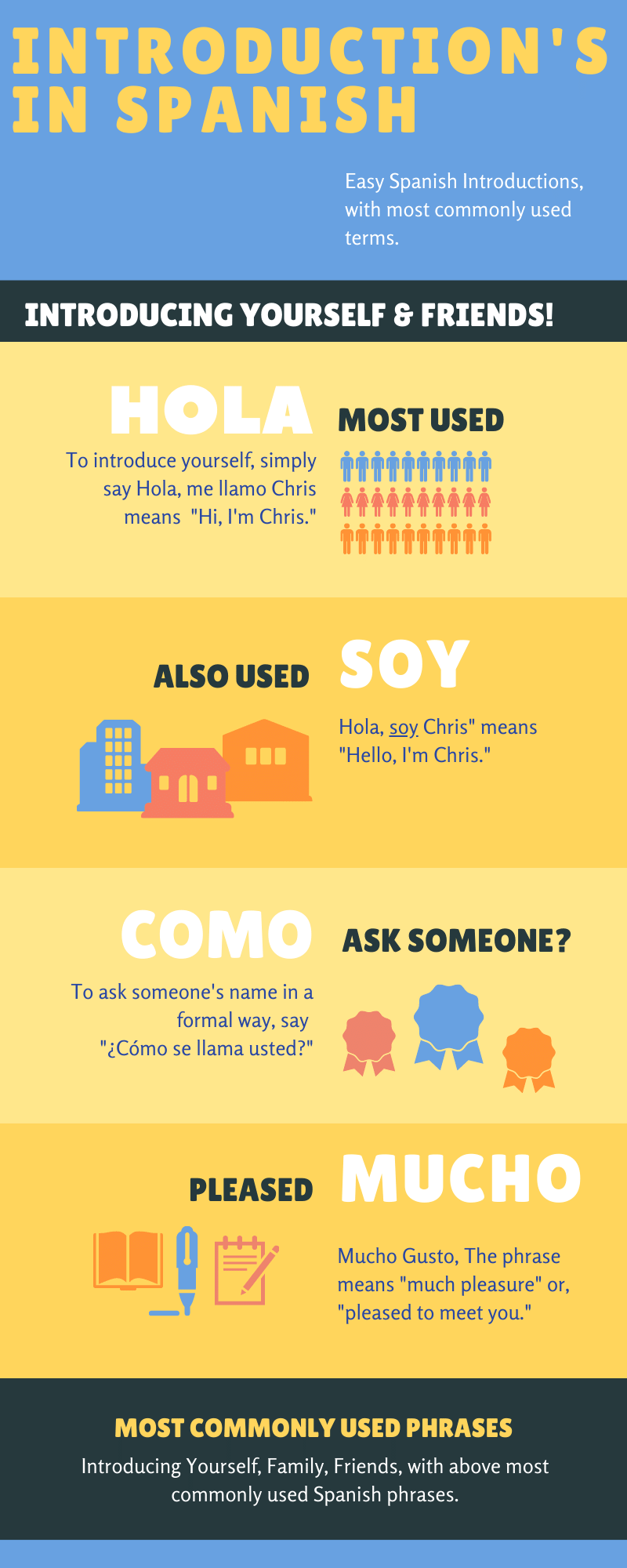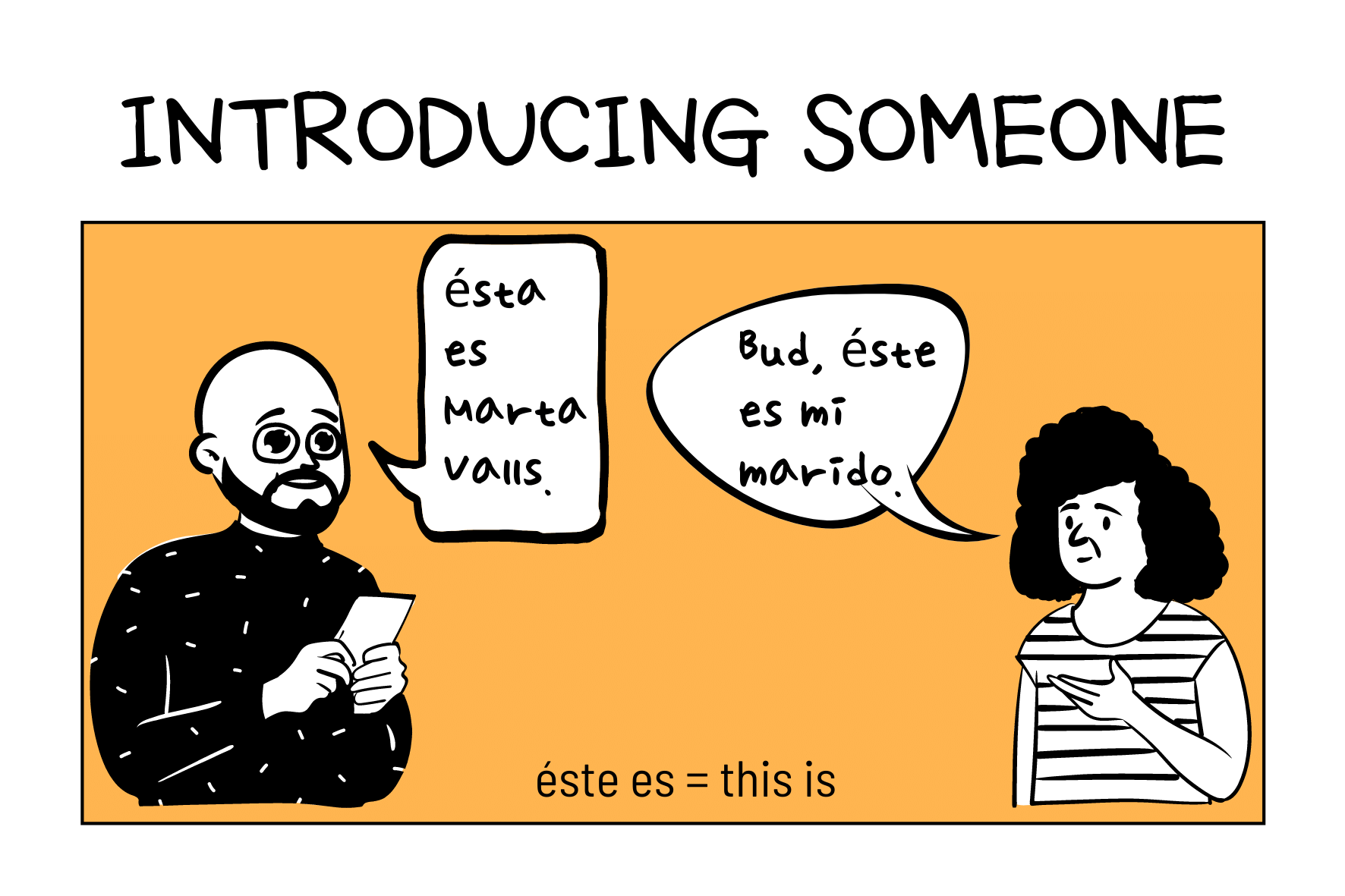

To get the conversation going, you’ll need to be able to say at least what your name is, who you are or what you do, and where you’re from. Saying what your name is rather different in Spanish from English. You say me llamo (literally I call myself). me llamo comes from the verb llamarse. If you want to say what someone else is called you use se llama. Read details of important Spanish Verbs and how effectively Ser Versus Estar is to be used in Introductions.
Self Introductions in Spanish :
| Me llamo Daniel Norrington. | My name is Daniel Norrington. |
| Me llamo Liz Owen. | My name is Liz Owen. |
| Me llamo Jack. | My name is Jack. |
| Se llama Kevin. | His name is Kevin. |
| Se llama Helen. | Her name is Helen. |

When you need to introduce someone to one another, the Spanish way is to say ‘éste es’ meaning ‘This is’ for introducing male or masculine, whereas ‘Esta Es’ for introducing Woman. Expressing I Love You in Spanish can be tricky for a foreigner.
Below are Examples of Introductions beginning with “This is … ”
| Bud, éste es mi marido. | Bud, this is my husband. |
| Susan, ésta es Marta Valls. | Susan, this is Marta Valls. |
| Quiero presentarte a nuestro director de ventas, Arturo Mata. | Let me introduce you to our sales director, Arturo Metia. |
| Quiero que conozcas a mi amigo Danny. | I’d like you to meet my friend Danny. |


When you say what you do in Spanish, don’t include a word for a or an before your job: soy maestro (I’m a teacher), soy enfermera (I’m a nurse).
| Soy amigo de Paul. | I’m a friend of Paul’s. |
| Soy el hermano de Rodrigo. | I’m Rodrigo’s brother. |
| Soy soltero. | I’m single. |
| Soy maestro. | I’m a teacher. |
| Soy representante. | I’m a rep. |
| Trabajo de programador para Compumax. | I work as a programmer for Compumax. |

Tip: Remember to say vivo sola rather than vivo solo if you’re female.
| Tengo dos hermanas. | I have two sisters. |
| Tengo un hijo y una hija. | I have a son and a daughter. |
| Tenemos familia en el sur de España. | We have relatives in the south of Spain. |
| Tienes hijos? | Have you got any children? |

To talk about yourself, you’ll need to be able to say how long you’ve been doing something, such as learning Spanish! One way to do this is to use hace followed by the length of time and then que and the verb in the present. For more information on the present tense, see here. You can also use llevo to mean I’ve been in examples like these.
| Me quedo una semana en Madrid. | I’m staying in Madrid for a week. |
| Me voy a quedar unos cuantos días más. | I’m going to stay for a few more days. |
| Estoy en casa de unos amigos. | I’m staying with friends. |







Saying No can be difficult, especially in a secondary language. Below are standard Negations used to